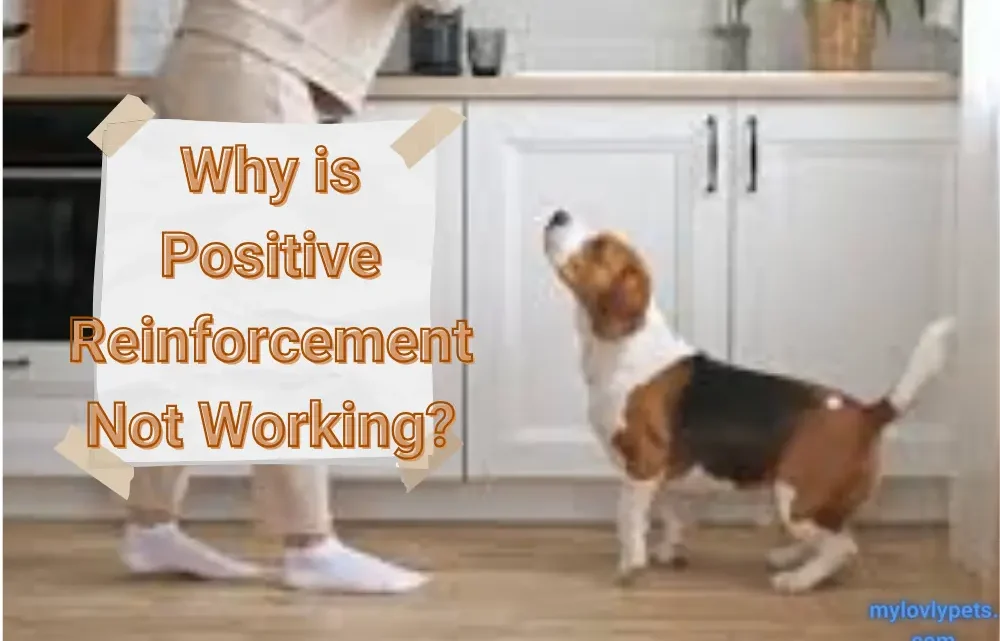
Why is Positive Reinforcement Not Working? And How to Fix It
If you’ve found yourself scratching your head, wondering why positive reinforcement not working in your dog training efforts, you’re not alone. In this comprehensive guide, we’ll delve into the possible reasons behind the puzzle and equip you with practical solutions to reignite the effectiveness of positive reinforcement. Let’s unravel the mystery together!
The Essence of Positive Reinforcement
What is Positive Reinforcement in Dog Training?
Positive reinforcement is a dynamic tool in shaping your dog’s behavior. It acts as a motivator, essentially giving your furry friend a virtual pat on the back when they ace the behaviors you’re aiming for. Let’s take a closer look at some key positive reinforcement techniques:
Treat-Based Rewards: Utilize irresistible, high-value treats exclusively for training sessions.
Verbal Praise: Shower your dog with enthusiastic and specific affirmations when they exhibit desired behaviors.
Interactive Toys: Incorporate your dog’s favorite toys into training sessions to add an element of play.
Clicker Training: Employ clickers to create distinct sounds associated with positive behavior, serving as a
signal for a forthcoming reward.
Physical Affection: Leverage the power of gentle strokes, pats, or quick belly rubs as forms of positive
reinforcement.
| What is Balanced Dog Training? |
Why Isn’t Positive Reinforcement Working?
Could It Be a Communication Gap?
Have you ever been in a conversation where the message just didn’t click? Dogs experience the same, and one way to bridge the communication gap is to maintain consistency in both words and gestures.
Is the Timing Off?
Timing is crucial. Delayed rewards can leave your dog feeling unrewarded and frustrated. Learn to synchronize your praise and treats with your dog’s impeccable behavior.
Are the Rewards Not Rewarding Enough?
Each dog has its unique preferences when it comes to rewards. Experiment with treats, toys, and praises to discover what truly motivates your furry friend.
Fixing the Glitches in Your Training Game Plan
Assessing Your Approach
Reflect on your training game plan by considering the following:
- Consistency Check:
- Evaluate your consistency with commands, rewards, and timing, as it forms the backbone of effective training.
- Clarity of Signals:
- Ensure your signals, both verbal and non-verbal, are clear and consistent, allowing your dog to predict and understand commands better.
- Timing Precision:
- Reflect on the timeliness of your rewards, as a desired behavior hinges on timely reinforcement.
- Observing Body Language:
- Pay attention to your dog’s body language to gauge whether they are stressed or disinterested, tailoring your approach accordingly.
Adjusting Your Strategy
- Trial and Error:
- Don’t be afraid to experiment with different approaches. Dogs have unique tastes, so be dynamic in your training techniques.
- Progressive Challenges:
- Adjust the difficulty of commands to keep your dog engaged and prevent boredom.
- Variety in Rewards:
- Mix up your rewards to discover what resonates most with your dog, whether it’s treats, playtime, or affection.
- Positive Association Building:
- If your dog isn’t responding to positive reinforcement for a specific task, gradually associate it with something enjoyable to shift their perception.
Common Dog Training Issues and Superhero Solutions
Dealing with Stubborn Pooches
For those times when your dog seems as stubborn as a mule, channel your inner patience. Use high-value treats, simplify commands, and break tasks into smaller, more manageable steps.
Minimizing Distractions
If your dog gets easily distracted, start training in controlled environments and gradually introduce distractions to build focus.
Calming the Overexcited Dog
Practice calming exercises before training sessions, use calming signals, and reward calm behavior to manage an overexcited dog.
When to Bring in the Experts
Wondering if it’s time to call in the professionals? Here are some veterinarian-recommended strategies:
Check Your Dog’s Health: Rule out health issues that may be affecting your dog’s behavior.
Consult Certified Trainers or Behaviorists: Seek expert advice from certified trainers or behaviorists, especially when faced with challenging situations.
| Positive Training for Aggressive and Reactive Dogs: Proven Techniques to Help Your Dog Overcome Fear and Anxiety |
Final Words
In the face of training challenges, persistence and patience are your allies. Positive reinforcement is a journey of building trust and creating an enduring bond between you and your loyal companion. Stay consistent, adapt to your dog’s needs, and relish the rewarding training adventure.
FAQs
How long does positive reinforcement training take?
Every dog is unique; results may appear in weeks or months. Consistency is the key.
What if my dog doesn’t respond consistently to positive reinforcement?
Assess communication, timing, and rewards. If issues persist, consult a certified trainer or behaviorist for personalized guidance.
Are there veterinarian-recommended strategies for behavioral issues through positive reinforcement?
Veterinarians recommend checking your dog’s health first and seeking advice from behaviorists and trainers for effective strategies.


